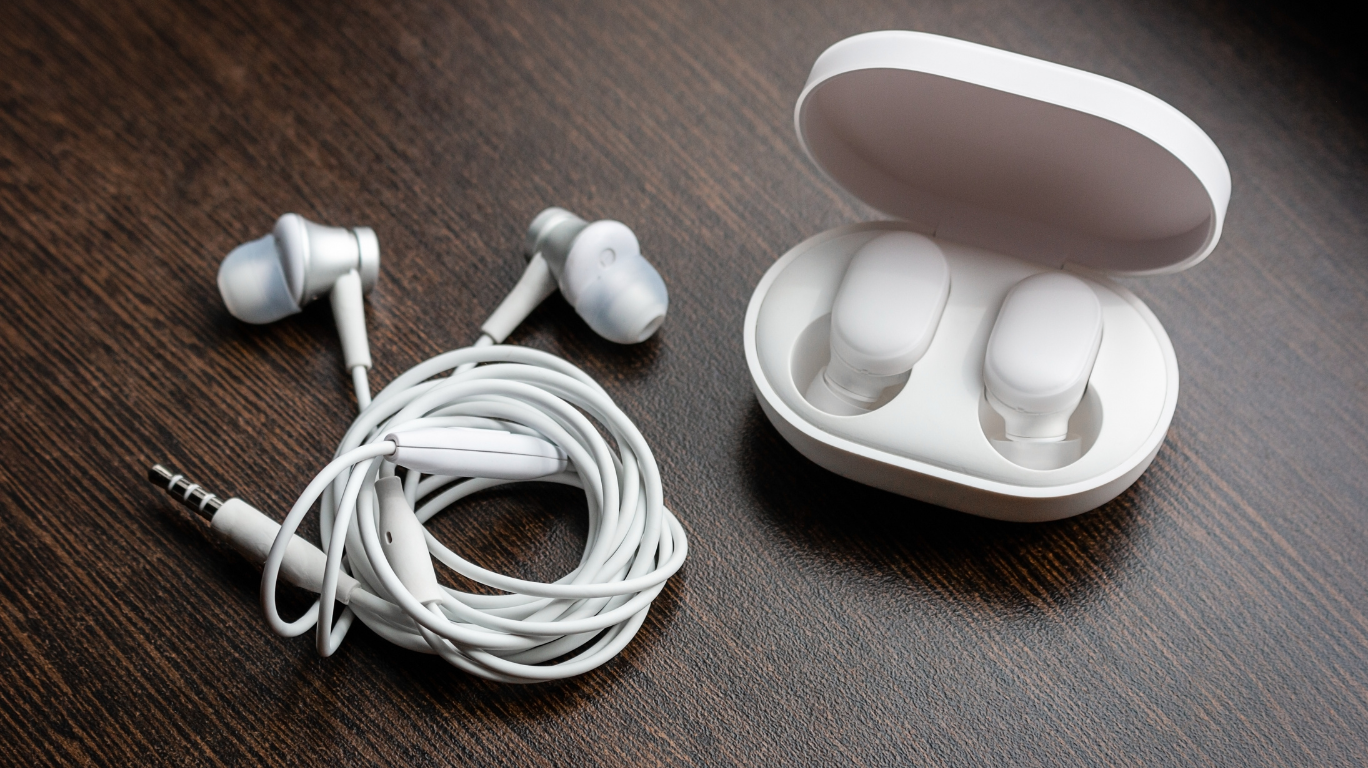Are you tired of tangled cords and limited mobility with your headset? The battle between wired and wireless headsets has been ongoing, but which one is truly better for you? In this article, we will discuss the key differences between the two and help you decide which one suits your needs.
As technology continues to advance, the decision between wired and wireless headsets becomes increasingly difficult. With concerns regarding convenience, sound quality, and cost, finding the right headset can be perplexing. However, don’t fret, as we have curated all the necessary information to help you make the right choice.
What Are Wired Headsets?
Wired headsets are audio devices that use a physical wire, such as a 3.5mm audio jack or USB, to connect to a device. They provide stable and high-quality audio transmission, making them reliable and suitable for professional use, gaming, and scenarios where minimal latency is important. These headsets are compatible with various devices, including smartphones, computers, gaming consoles, and audio interfaces. Additionally, they do not require battery charging, ensuring uninterrupted usage.
Popular examples of wired headsets include the Sony MDR-7506, Sennheiser HD 650, and HyperX Cloud Alpha. When selecting a wired headset, factors such as cable length, audio quality, and comfort for extended use should be taken into consideration.
How Do Wired Headsets Work?
- Wired headsets work by connecting to devices via physical cables, typically using a 3.5mm audio jack or USB connection.
- These headsets transmit audio signals from the device to the speakers or headphones, allowing users to listen to sound without relying on wireless technology.
- In addition, wired headsets often include in-line controls for adjusting volume, muting audio, or answering calls, providing added convenience for users.
- Some wired headsets also utilize noise-canceling technology to actively reduce external noise and enhance the listening experience.
- The physical connection of wired headsets ensures consistent and reliable audio transmission, eliminating potential interference or signal loss commonly associated with wireless connections.
Wired or tired? Let’s weigh the sound quality, convenience, battery life, cost, and compatibility of wired headsets before you make your decision.
What Are the Pros and Cons of Wired Headsets?
When considering wired headsets, it’s essential to weigh their pros and cons to make an informed decision. Understanding the advantages and disadvantages of wired headsets will help you determine if they align with your needs.
- Pros: Wired headsets generally offer superior sound quality, no battery dependency, and minimal interference, making them reliable for uninterrupted usage.
- Cons: On the downside, wired headsets may lead to tangling of cables, restrict mobility, and pose inconvenience due to cable management.
Pro-tip: When choosing a wired headset, opt for one with a tangle-free cable design and consider the length of the cable to ensure it suits your usage requirements.
What Are Wireless Headsets?
Wireless headsets are audio devices that utilize wireless technology to connect to devices such as smartphones, computers, or tablets. They offer the convenience of mobility, allowing users to move around freely without being tied down to a specific location. These headsets typically use Bluetooth or other wireless protocols to establish a connection with the audio source, providing a cord-free experience. Wireless headsets come in various forms, including over-ear, on-ear, and in-ear styles, catering to different user preferences. They are popular for activities like gaming, exercising, or hands-free communication. Additionally, some wireless headsets incorporate advanced features such as noise-cancellation technology and long battery life, enhancing the overall user experience.
How Do Wireless Headsets Work?
Wireless headsets operate through a technology called Bluetooth, which allows them to connect to devices wirelessly. Here’s a breakdown of how wireless headsets work:
- Pairing: The headset pairs with a device using Bluetooth, establishing a secure wireless connection.
- Transmission: Audio signals are transmitted from the device to the headset wirelessly, providing the user with freedom of movement.
- Decoding and Playback: The headset decodes the audio signals and plays the sound through the speakers or headphones.
- Reception: The built-in receiver in the headset receives incoming calls or audio from the paired device.
Fun Fact: The Bluetooth technology used by wireless headsets was named after a 10th-century Danish king, Harald Bluetooth, who was known for uniting Denmark and Norway – just like how Bluetooth technology unites devices!
Be free from pesky wires, but also be prepared for your headset to mysteriously disappear into the void of your couch cushions.
What Are the Pros and Cons of Wireless Headsets?
- Pros of Wireless Headsets:
- Convenience: Wireless headsets offer the convenience of no tangled wires, providing freedom of movement.
- Mobility: They enable multitasking and the freedom to move around during calls or while listening to music.
- Modern Design: These headsets often have a sleek and stylish design, with advanced features like touch controls.
- Cons of Wireless Headsets:
- Battery Life: One potential drawback of wireless headsets is the need for regular recharging or battery replacement.
- Interference: There is a possibility of wireless interference affecting sound quality or connectivity with these headsets.
- Cost: Generally, wireless headsets are more expensive than wired ones.
Despite facing challenges like battery life and interference, wireless headsets offer unparalleled convenience and freedom of movement. Their modern design and untethered experience make them a popular choice for many users.
Don’t get tangled up in the decision – consider these factors before choosing between wired and wireless headsets.
Factors to Consider When Choosing Between Wired and Wireless Headsets
When it comes to headsets, there are two main options: wired and wireless. Each has its own set of advantages and disadvantages, and choosing between them can be a difficult decision. In this section, we will discuss the various factors that should be taken into consideration when deciding between wired and wireless headsets. From convenience and mobility to sound quality and compatibility, we will cover all the important aspects to help you make an informed decision.
1. Convenience and Mobility
- When considering a headset, take into account its design and weight to ensure comfort during extended use, particularly if you prioritize mobility.
- Choose a wireless headset with Bluetooth technology for seamless connectivity and enhanced mobility, allowing you to move freely without being tethered to a device.
- Look for a wireless headset with a strong range and stable connection to maintain convenience and mobility, especially in larger spaces or when multitasking.
- Check for additional features such as foldable designs or carrying cases to improve portability, making it easier to take your headset on the go while still maintaining convenience.
- Research the battery life and charging options to ensure prolonged use without sacrificing mobility, especially if you plan on using the headset in different locations throughout the day.
The only wires you’ll hear with wired headsets are the ones being crossed in a heated debate about sound quality.
2. Sound Quality
When evaluating sound quality in headsets, it is important to take into account factors such as frequency response, total harmonic distortion (THD), and sensitivity in order to achieve the best possible audio experience.
Don’t get caught with a dead headset, choose wisely between wired and wireless for longer battery life.
3. Battery Life
When considering the battery life of wireless headsets, it is important to take into account the following factors:
- Check the battery life specifications provided by the manufacturer to ensure that it meets your daily usage needs.
- Consider the charging time required for the wireless headset and look for quick-charging options if you have a busy schedule.
- Assess how the battery life will impact your usage patterns, whether it is for long work hours, gaming sessions, or travel purposes.
Fact: The battery life of wireless headsets can vary significantly based on usage, with some models offering up to 20 hours of continuous playback on a single charge.
If you’re on a budget, remember: wired headsets may cost less upfront, but the price you pay for untangling tangled cords may just drive you insane.
4. Cost
- Consider the initial cost of the headset, including the purchase price and any additional accessories or cables required for wired headsets.
- For wireless headsets, factor in the cost of potential replacement batteries or rechargeable batteries, as well as the cost of any necessary adapters or receivers.
- Assess the long-term cost of ownership, including maintenance, repair, and replacement expenses for both wired and wireless headsets.
- Compare the cost of any additional features or functionalities, such as noise-cancellation or virtual surround sound, and evaluate their value relative to the overall cost.
- Finally, weigh the cost against the overall benefits and prioritize the features that align with your needs and budget when choosing between wired and wireless headsets.
5. Compatibility
- Device compatibility: Make sure that the headset is compatible with all the devices you plan to use it with. Check for compatibility with various platforms, including PC, Mac, gaming consoles, and mobile devices.
- Connectivity options: Consider the available connectivity options for the headset. Assess if it supports Bluetooth connectivity, USB connectivity, or both, depending on the devices you intend to use it with.
- Operating system compatibility: Verify if the headset is compatible with the operating system of your devices. Some headsets may have specific requirements for Windows, macOS, iOS, or Android.
- Multi-device pairing: If you need to connect the headset to multiple devices at once, make sure it offers multi-device pairing functionality for seamless switching between devices.
- Accessories and adapters: Check for any additional accessories or adapters needed for compatibility with specific devices, especially if they have unique audio input/output configurations.
Frequently Asked Questions
What are the main differences between wired and wireless headsets?
Wired headsets use a physical cable to connect to a device, while wireless headsets connect via Bluetooth or a wireless transmitter.
Which type of headset offers better sound quality?
This depends on the specific models, but generally wired headsets offer better sound quality due to the direct connection to the device.
Is one type of headset more convenient to use than the other?
Wireless headsets offer more convenience as they eliminate the need for cords and allow for more freedom of movement.
What is the average battery life for wireless headsets?
The average battery life for wireless headsets is around 15-20 hours, but this can vary depending on usage and model.
Are there any potential health concerns with using wireless headsets?
There have been some concerns about the potential health risks of prolonged exposure to Bluetooth radiation, but more research is needed to determine the exact effects.
Which type of headset is more cost-effective in the long run?
Wired headsets are typically more cost-effective in the long run as they do not require battery replacements or upgrades.



